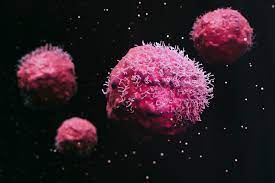Researchers from the Bhogaraju Group at EMBL Grenoble have made significant strides in understanding how a family of proteins implicated in cancer progression interact with their targets. Their findings, published in The EMBO Journal, shed light on the molecular mechanisms underlying chemotherapy- and radiotherapy-resistant cancers and offer potential avenues for the development of targeted therapies.
The melanoma antigen gene MAGE family comprises over 40 proteins, some of which are known to be elevated in various cancers, where they may contribute to tumor growth and resistance to treatment. One such protein, MAGEA4, interacts with RAD18, a protein abundant in certain cancer cells that plays a role in DNA repair. High levels of RAD18 are associated with resistance to genotoxic therapies.
Using advanced structural and cell biology techniques, the researchers investigated the interaction between MAGEA4 and RAD18. Leveraging AlphaFold, an AI-based tool for protein structure prediction, they uncovered a binding groove on MAGEA4 that prevents RAD18 from attaching ubiquitin tags to itself, thereby avoiding degradation.
Moreover, the team identified a synthetic protein fragment capable of disrupting the interaction between MAGEA4 and RAD18, offering a potential strategy for drug development aimed at inhibiting RAD18 accumulation in cancer cells.
Remarkably, the researchers also discovered a similar binding groove in another MAGE family protein, suggesting a common mechanism for regulating cancer-promoting proteins. By targeting this groove, future therapies could potentially impede the activity of multiple MAGE proteins implicated in cancer progression.
Furthermore, the study revealed critical interactions within the RAD18 protein itself, essential for its function in promoting cancer cell survival. By disrupting these interactions, the researchers were able to sensitize cancer cells to chemotherapy and radiotherapy, hinting at the possibility of combination therapies targeting both MAGE proteins and RAD18.
Dr. Sagar Bhogaraju, Group Leader at EMBL Grenoble, expressed enthusiasm about the findings, emphasizing their potential implications for cancer therapy. The team is now focused on developing screening methods to identify compounds that bind to the newly discovered binding groove on MAGE proteins, paving the way for novel targeted therapies against cancer-driving MAGE proteins.
Overall, this study represents a significant advancement in our understanding of the molecular mechanisms underlying cancer progression and offers promising avenues for the development of precision therapies to combat treatment-resistant cancers.
